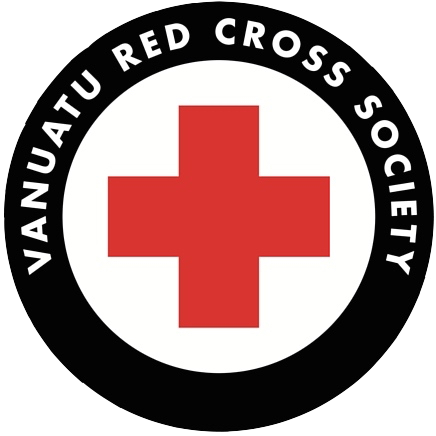This week, a team of Vanuatu Red Cross trainers and volunteers commenced the facilitation of a series of ‘Safe Shelter Awareness’ workshops aimed at assisting 900 households in communities across West Tanna to rebuild their homes in a way that they will better resist future natural disasters such as cyclones and earthquakes.
Tanna was one of the worst affected islands during Cyclone Pam, and although casualties were minimal, the Shelter Cluster’s ‘Shelter and Settlements Vulnerability Assessment’ (carried out in April) found that roofs and walls of around 70 % of houses in rural areas of Tanna and around 40% of roofs and 30% of walls in urban areas of Tanna had been completely destroyed. 8 months on from the cyclone and the people of Tanna are still rebuilding.
Source: Robbie Dodds, VRCS/ARC
In an effort to assist these communities, Vanuatu Red Cross’s shelter team, led by Australian Red Cross (ARC) delegate Robbie Dodds, has been working collaboratively with Shelter Cluster partners and local builders, and with support from Australian Aid, Australian Red Cross and the International Federation of Red Cross and Red Crescent Societies (IFRC) to facilitate the Safe Shelter Awareness workshops.
These workshops come at an opportune moment, as families are repairing and strengthening their houses with renewed urgency in preparation for yet another cyclone season, one which forecasters predict will be particularly active as a result of the current El Nino event affecting Vanuatu.
The aim of the workshops is to build off existing knowledge and best traditional and modern construction practices present in communities, in order to equip all families with some of the technical knowhow required to build strong, safe houses.
Source: Robbie Dodds, VRCS/ARC
The workshops focus on simple construction techniques around four key messages developed by the Vanuatu Shelter Cluster: strong connections between every part of the house to hold it down during a cyclone (holem daon haos), the incorporation of cross bracing to hold the house up (holem stret haos), strong foundations and choosing a safe site.
At the conclusion of each workshop, a small supply of building materials (cyclone straps and nails) is provided to the families, allowing them to put theory into action as they reinforce their houses in preparation for the upcoming cyclone season.
Team leader Robbie Dodds believes that “making strong houses doesn’t have to be expensive, it’s more about making strong connections between the various parts of the building using the best materials on hand, installing cross bracing, building good foundations and choosing a safe site – the Tanna House, or nimulaten made with locally available materials, and these key principles in mind proves this to be the case. With just a few extra pieces of timber, fixings such as nails and bush rope and a bit of technical knowhow, the strength and resistance against cyclones of any house in Vanuatu can be greatly increased”.
So far, participants have been extremely receptive to the workshops, Amanda Krish from Isini in West Tanna commented “I have never attended an awareness session like this in the past, I find the practical side very helpful”.
Cyclone Pam left 66,000 people homeless in Vanuatu, which means that assisting people to rebuild their homes has been a priority for Vanuatu Red Cross in their emergency response and longer-term recovery activities.
During the relief phase, Red Cross provided 28,160 people with relief shelter materials such as tarpaulins and fixings and 25,760 people with shelter toolkits, all aimed at enabling people to do basic repairs on their home or to build their own basic emergency shelter.
Source: William Mala, VRCS
The complex logistics and expense involved in procuring and transporting quality building materials to remote islands and communities in Vanuatu, makes repairing or rebuilding homes particularly challenging. A coordinated approach with communities and implementing agencies, and incorporation of locally found materials into the response helps to ensure that the assistance reaches a larger number of affected households.
Vanuatu Red Cross Society, together with the Vanuatu Shelter Cluster and with support from IFRC, ARC, New Zealand Red Cross, Australian Aid and a number of sister Red Cross National Societies has so far achieved substantial progress in assisting cyclone-affected communities in their recovery, with this week’s Safe Shelter Awareness sessions playing a fundamental role in this process.
To find out more, download the Red Cross ‘Besik Konstraksen’ handbook here

